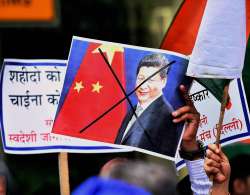Sikkim stand-off: No dispute with Bhutan in Doklam, says China
China today claimed that there is no dispute with Bhutan in the Doklam area as both the countries have a "basic consensus" on the boundary.

Amid stand-off in the Sikkim sector, China today claimed that there is no dispute with Bhutan in the Doklam area as both the countries have a "basic consensus" on the boundary. There is currently a military stand-off between Indian and Chinese armies in the region and diplomatic tension has also heightened.
The standoff between troops of India and China at Doklam area started after Bhutan, which has close diplomatic and military ties with India, protested to Beijing about the People's Liberation Army (PLA) troops building a road in the strategic location close to chicken neck tri-junction.
"I can say that we have been stressing that Doklam belongs to China since ancient times. It was under the effective jurisdiction of China without any dispute. China and Bhutan had about 24 rounds of boundary talks," Chinese Foreign Ministry spokesman Geng Shuang told a media briefing answering a question about Bhutan's protest.
"Although the boundary between the two countries is yet to be settled but we have basic consensus on the boundary and there is no dispute between both of us that Doklam belongs to China," he said.
Geng said China had been acting according to the agreements between the two countries and Doklam had been under the effective jurisdiction of China.
"Chinese activities (road building) in the relevant area does not violate relevant agreements and does not alter the status quo. The Bhutan side also knows it clearly. We will work together with Bhutan through friendly negotiations and jointly maintain peace and tranquility in the border areas," he said.
China yesterday ruled out of any scope for a "compromise" with India and put the onus on New Delhi to resolve the "grave" situation.
In unusually blunt remarks, China's Ambassador to India Luo Zhaohui said "the ball is in India's court" and it was for the Indian government to decide what options could be on the table to resolve the standoff.
(With PTI inputs)